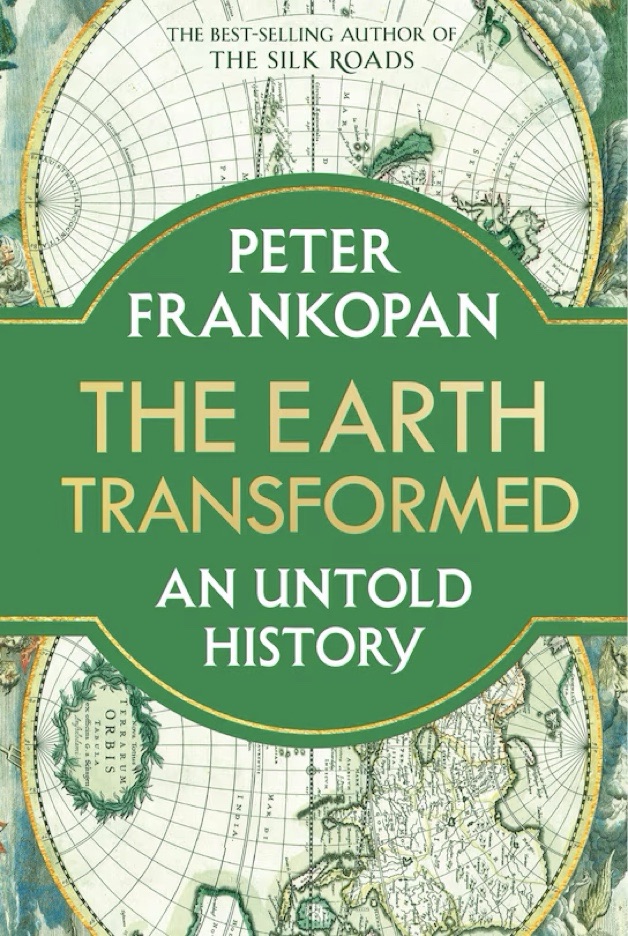
By far the most difficult and complex book that I have read in years, and perhaps ever, I persisted only because after about 200 pages, the Oxford professor of history was finally up to the years designated as A.D. and I thought it would get better. It did in some respects, but not in many. After another 90 pages we were only up to 1250 A.D and after yet another 100 pages up to 1800, and at least some names of places and people became familiar to me but many still did not.
The atrocities of the slave trade, and its lasting effect on global economics is described in detail, albeit scattered over about 50 pages in three chapters, along with data about diseases, climate change, volcanoes, trade, and migration. In fact, one of the problems I experienced with this wordy dry book is that the time frame and all of the topics keep shifting, seemingly randomly. The Great Wall of China is mentioned only in passing in one sentence and the Terra Cotta soldiers which I have marvelled at, not at all, nor is Machu Picchu. The Crusades merit a one sentence mention. The invocation of many religions to justify horrendous acts of cruelty is a recurring theme.
There are thousands of unfamiliar names of places and people as borders and names continually change. Twelve pages of maps of the world as it changed over many millennia are never referenced in the text. There are several confusing charts in the text that sometimes seem to be unrelated to the topic being addressed. The author sees irony frequently using the word Ironically every few pages, sometimes where I can see no irony.
On the positive side, quoting Amatra Sen, the author notes that famines are not the result of lack of availability but of pricing problems, in particular affecting those who cannot afford food at times of sharply rising prices and hoarding by the rich. And as a part time regenerative farm volunteer, I was intrigued by the discussion of potatoes as as a highly nutritious high-yield crop, but the horror of the1845-52 Irish potato famine from blight (imported from South America) showed the folly of monoculture.
The last three chapters mostly covering the time I have lived is definitely more familiar to me but I was previously unaware of many of the events discussed, such as the covert cloud seeding that took place in Vietnam and the U.S.S.R, and is still being used covertly in several places. I lived in the U.S. for three years under three different presidents (you figure what years that had to be) but was largely dependent on mainstream news outlets and if it didn’t involve U.S. politics, troops, or money, it just was not reported.
The last chapter is particularly bleak in its projection of the many challenges and the refusal of most politicians to address them in in a meaningful way. To read this is to conclude that we are doomed. I like books that present challenging problems and then offer solutions, such as Sir David Attenborough’s A Life on our Planet. This one only presents the challenges, except for a weak attempt to show an optimistic side to things in the conclusion.
A quote from part of a single paragraph illustrates the density and opaqueness of the entire book: “Splenothem data from Balum Cave in Belize, along with lake sediment cores in northern Yucatan and titanium content from the Cariaco Basin in the southern Caribbean all point to to a protracted period of drought in the mid-ninth century that lasted for several decades. Average rainfall levels dropped by around 50 percent and occasionally by as much as 70 percent with these shifts likely the result of changes in solar activity, volcanic eruptions, or both. This exacerbated problems cased by rapid deforestation that has been linked to the dual need to expand agricultural land and to obtain wood for fires required in order to bake calcium carbonate from shell or stone into quicklime.”
In a much more readable and enjoyable form, much of the history of humankind, politics, culture and religion can be obtained in either Jared Diamond’s 1997 Guns, Germs and Steel or Francis Fukuyama’s 2011 The Origins of Political Order, both of which I enjoyed, although they lack the emphasis on conservation.
There is a bleak fatalistic tone to the whole book, but I am in awe of the incredible amount of global information the author delivers. I suppose it might make an interesting and appropriate text for a class to study in an advanced university history or ecology course.
As a work of reference, this may appeal to a select few historians, epidemiologists, archaeologists, and ecologists, with its 26 page index, but I can’t recommend it for the general public.
1.5/10
Thanks, The New Yorker.